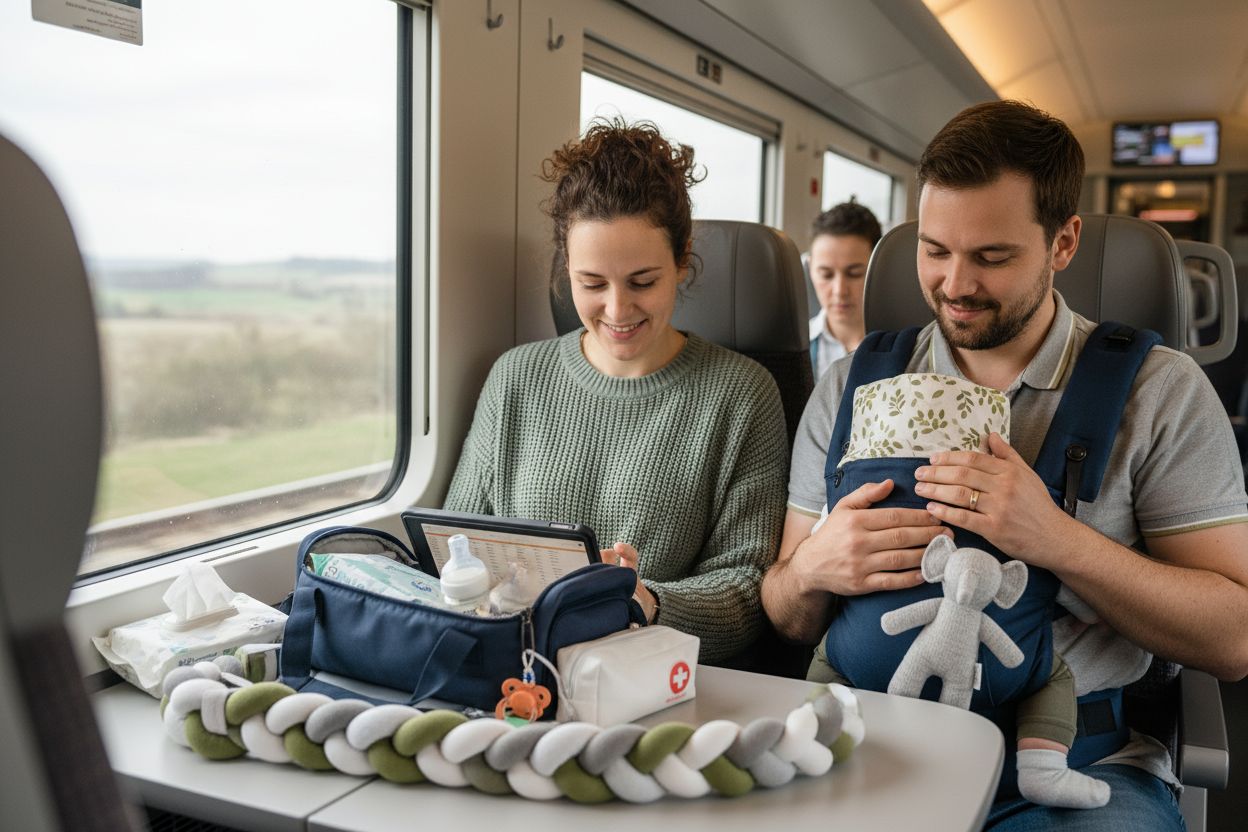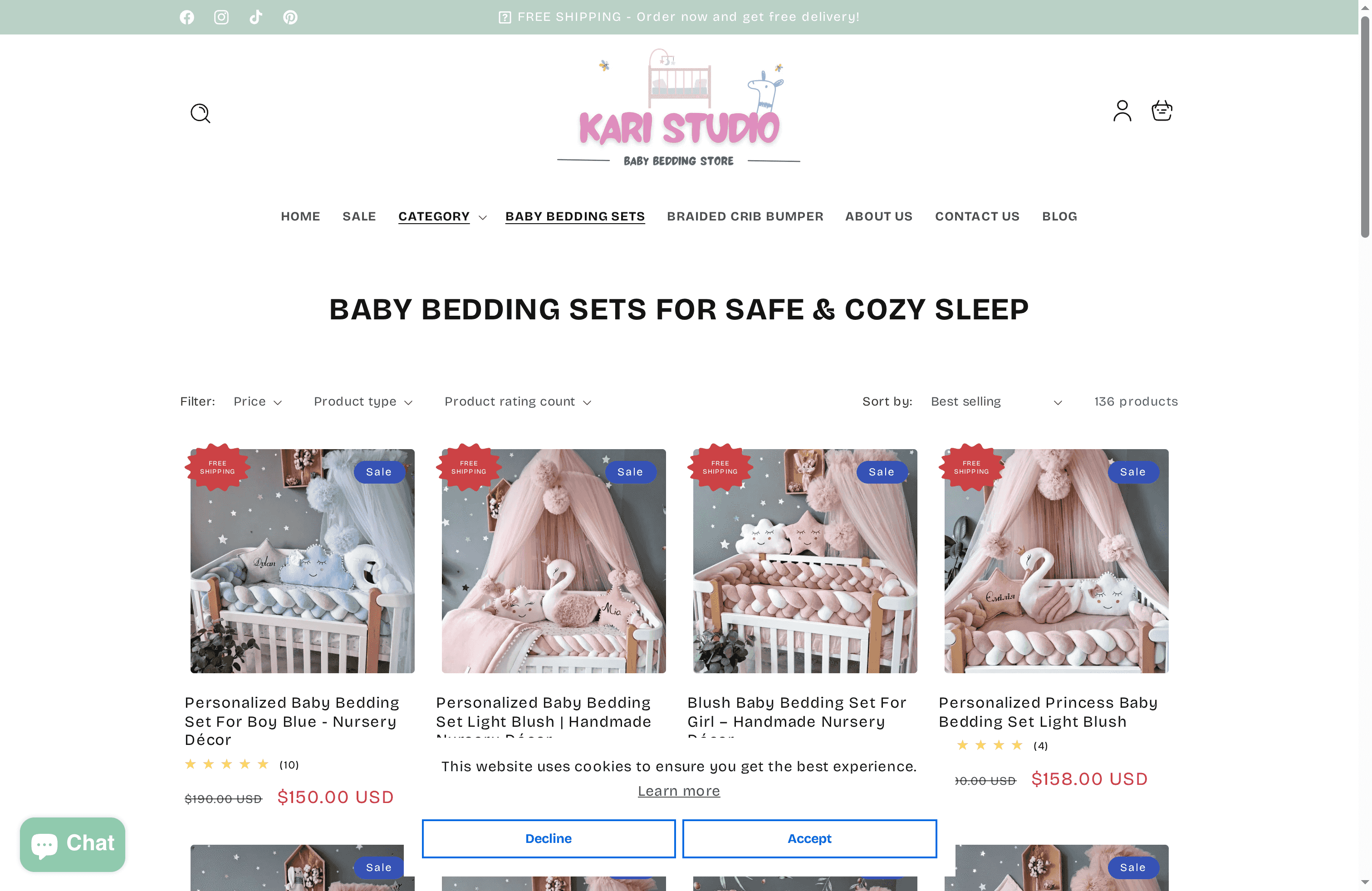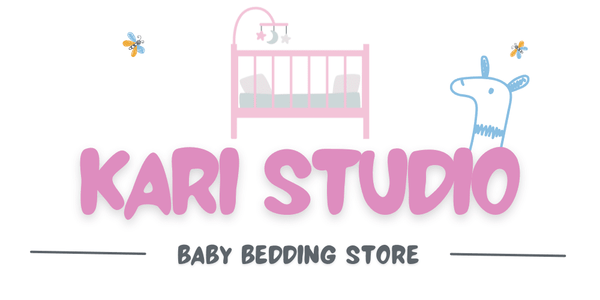Did you know that over 60 percent of parents say traveling with infants is more stressful than any other travel experience? Every journey demands patience, careful planning, and heightened awareness of health and safety risks. From keeping your baby comfortable in new places to managing changing routines and health concerns, knowing what to expect can make the difference between a bumpy ride and a smooth adventure with your little one.
Table of Contents
- Challenges Faced When Traveling With Infants
- Tips For Airplane Travel With Babies
- Car, Train, And Bus Travel Best Practices
- Essential Packing List For Infant Travel
- Sleep And Feeding Solutions On The Go
- Safety, Comfort, And Stress-Reducing Strategies
- Seasonal Tips, Faqs, And Kari Studio Solutions
Key Takeaways
| Challenge | Strategies |
|---|---|
| Health Risks | Prioritize infant health by packing necessary medications and adhering to hygiene practices while traveling. |
| Routine Maintenance | To minimize disruptions, maintain familiar sleep and feeding routines using comfort items and adaptable schedules. |
| Travel Preparation | Ensure safety by using approved restraints and packing essential travel items for quick access. |
| Emotional Readiness | Approach travels with flexibility and a calm attitude, anticipating potential stressors for both parents and infants. |
Challenges Faced When Traveling With Infants
Traveling with infants presents a complex landscape of logistical, health, and emotional challenges that can overwhelm even the most prepared parents. According to the CDC’s travel guidelines, parents must navigate multiple potential risks, from health vulnerabilities to practical disruptions in their child’s routine.
The primary challenges parents encounter include health-related risks such as increased susceptibility to travel-associated illnesses. According to CDC’s Yellow Book, infants face elevated risks of:
- Dehydration
- Diarrheal diseases
- Respiratory infections
- Travel-associated febrile conditions
- Non-infectious hazards like ear pain during air travel
Beyond medical concerns, parents struggle with practical challenges that test their patience and planning skills. Sleep disruption, maintaining feeding schedules, managing unpredictable infant moods, and ensuring comfort in unfamiliar environments become critical priorities. Understanding crib canopy safety can help parents create consistent sleep environments even while traveling.
Emotional preparedness is equally crucial. Parents must anticipate potential stressors, pack strategically, remain flexible, and approach travel with realistic expectations. Successful infant travel requires a combination of meticulous planning, adaptability, and a calm demeanor that reassures both parent and child throughout the journey.
Here’s a comparison of key challenges when traveling with infants and recommended strategies to address them:
![]()
| Challenge | Examples | Recommended Strategies |
|---|---|---|
| Health Risks | Dehydration Diarrheal diseases Respiratory infections |
Pack medication Follow hygiene Monitor infant health |
| Routine Disruptions | Sleep interruption Feeding schedule changes |
Maintain routines Pack familiar items |
| Practical Difficulties | Packing supplies Comfort in new environments |
Prepare extras Bring comfort objects |
| Emotional Stress | Unpredictable moods Parent anxiety |
Stay flexible Pace realistically |
Tips for Airplane Travel With Babies
Airplane travel with infants requires meticulous preparation and strategic planning to ensure a smooth and comfortable journey for both parents and babies. According to the CDC’s travel guidelines, parents must navigate multiple challenges unique to air travel with young children.
Ear Pressure Management is critical during flights. The CDC recommends nursing or bottle-feeding during takeoff and landing to help babies equalize ear pressure and minimize discomfort. This simple technique can prevent painful ear pain and reduce potential in-flight distress.
Safety is paramount when flying with infants. Parents should:
- Use government-approved child restraint systems
- Utilize FAA-approved car seats
- Ensure proper seat positioning and securing
- Understand safe sleeping guidelines even during travel
Practical preparation can significantly reduce travel stress. Pack essential items like extra clothing, feeding supplies, and comfort items in easily accessible bags. The CDC notes TSA exemptions for breast milk and infant feeding supplies, which can ease airport security transitions. Remember that flexibility, patience, and a calm demeanor are your greatest assets when traveling with a baby. Anticipate potential challenges, but approach the journey with confidence and a positive mindset.
Car, Train, and Bus Travel Best Practices
Traveling with infants on ground transportation requires careful planning and strategic preparation to ensure safety and comfort. According to the CDC’s travel guidelines, motor vehicle safety is paramount when transporting young children across different modes of transportation.
For car travel, the CDC emphasizes critical safety protocols:
- Always use U.S.-approved car seats appropriate for your infant’s age and size
- Place car seats in the back seat
- Ensure proper installation and secure restraint
- Take frequent breaks for feeding, diaper changes, and infant movement
Safe and smart crib bumper alternatives can inspire creative solutions for maintaining infant comfort during long journeys. When traveling by train or bus, parents should prioritize:
- Choosing seats near bathroom facilities
- Packing easily accessible changing supplies
- Bringing compact, comfortable infant carriers
- Maintaining consistent feeding and sleep schedules
Beyond physical safety, managing your infant’s emotional well-being is crucial. Bring familiar comfort items, maintain a calm demeanor, and be prepared to adapt quickly to unexpected situations. Ground travel with an infant is an adventure that requires patience, flexibility, and a well-stocked diaper bag.

Essential Packing List for Infant Travel
Preparing for travel with an infant requires strategic and comprehensive packing to ensure comfort, safety, and preparedness. According to the CDC’s travel guidelines, parents must carefully consider every item packed to support their baby’s needs across different travel scenarios.
Feeding Essentials are critical for infant travel. The CDC recommends packing:
- Familiar formula or breast milk
- Sterile water for formula preparation
- Breast milk expression supplies (pumps, ice packs, storage containers)
- Oral rehydration solutions
- Bottles and cleaning supplies
Understanding safe sleep recommendations can help parents pack appropriate comfort items and sleeping accessories. Additional must-pack items include:
- Multiple changes of clothing
- Diapers and wipes
- Portable changing pad
- Hand sanitizer and cleaning wipes
- Comfort items (blanket, favorite toy)
- Infant medication and first-aid kit
- Identification documents
- Portable infant safety seat or restraint system
Remember to pack strategically—use compact, multi-purpose items and pack extras of critical supplies. Anticipate potential travel disruptions by bringing more diapers, clothes, and feeding supplies than you expect to need. Flexibility and over-preparation are your best travel companions when journeying with an infant.
Sleep and Feeding Solutions On the Go
Traveling with infants requires adaptive strategies for maintaining essential routines like feeding and sleeping. According to CDC guidance, parents must be prepared to support their baby’s nutritional and rest needs in constantly changing environments.
Feeding Strategies are crucial during travel. The CDC recommends:
- Continuing breastfeeding or expressing milk while traveling
- Feeding on demand
- Utilizing private lactation spaces at airports
- Managing breast milk transport through TSA guidelines
What is a sleep sack? Understanding portable sleep solutions can help parents maintain consistent rest patterns. To manage sleep disruptions, parents should:
- Bring familiar comfort objects
- Maintain consistent bedtime routines
- Create familiar sleep environments
- Include children in travel planning to reduce stress
- Be flexible with sleep schedules
Jet lag and schedule changes can significantly impact infant sleep and mood. Pack portable blackout covers, familiar blankets, and create mini sleep sanctuaries in different travel settings. Patience, preparation, and a calm approach will help both parents and babies navigate sleep and feeding challenges during travel.
Safety, Comfort, and Stress-Reducing Strategies
Traveling with infants demands a proactive approach to safety, comfort, and emotional well-being. According to CDC travel guidelines, parents must implement comprehensive strategies to protect and support their babies during journeys.
Safety Essentials encompass multiple critical considerations:
- Use proper child restraints during travel
- Apply infant-safe insect repellent
- Protect against sun exposure
- Supervise around potential hazards
- Maintain vigilant environmental awareness
Minimalist nursery design tips can inspire portable comfort strategies that translate well to travel. Stress reduction techniques include:
- Pack familiar comfort objects
- Maintain consistent routines
- Prepare comprehensive health kits
- Enroll in travel safety programs
- Schedule pre-travel health consultations
Emotional preparedness is as crucial as physical safety. Anticipate potential challenges, remain flexible, and approach travel with a calm demeanor. By combining strategic planning, safety consciousness, and emotional intelligence, parents can transform potentially stressful travel experiences into memorable family adventures.
Seasonal Tips, FAQs, and Kari Studio Solutions
Traveling with infants requires comprehensive preparation, especially when navigating seasonal variations and international travel regulations. According to CDC and U.S. State Department guidelines, parents must be well-informed about documentation, health requirements, and strategic planning.
Seasonal Travel Considerations include:
- Temperature-appropriate clothing layers
- Seasonal illness prevention
- Climate-specific infant care supplies
- Sun protection strategies
- Hydration management
Frequently Asked Questions can help parents anticipate common travel challenges. Key international travel FAQs for parents involve:
- Required infant documentation
- Vaccination requirements
- Passport and consent regulations
- Travel insurance recommendations
- Emergency medical preparation
Kari Studio’s specialized nursery products offer unique solutions for traveling families. Our braided crib bumpers, personalized bedding sets, and protective accessories ensure comfort and safety across different travel environments. By combining strategic planning, adaptable gear, and comprehensive knowledge, parents can transform potential travel stress into memorable family experiences.
Make Traveling With Your Infant Safer and More Comfortable
Traveling with an infant can be full of unexpected challenges like sleep disruptions, maintaining feeding routines, and managing your baby’s comfort in new environments. The need for familiar, safe, and soothing nursery essentials becomes crucial to help ease your infant’s stress and make every journey smoother. Items such as braided crib bumpers and cozy bedding crafted from hypoallergenic fabrics provide the gentle comfort your little one needs no matter where you go.

Discover how Kari Studio’s handmade and customizable nursery products can transform travel struggles into peaceful moments. Explore our premium baby bedding sets designed to deliver softness and safety on the move. Create a calming space for your baby anywhere you travel by choosing from our range of braided crib bumpers and protective accessories built to support healthy sleep and comfort. Start preparing your infant’s travel essentials today and enjoy peace of mind during every family adventure. Visit Kari Studio now and bring that cozy nursery feeling with you wherever life takes you.
Frequently Asked Questions
What are the primary health risks when traveling with infants?
Infants face increased susceptibility to dehydration, diarrheal diseases, respiratory infections, and travel-associated febrile conditions when traveling. It’s crucial to monitor their health and follow hygiene practices to minimize these risks.
How can I manage my infant’s ear pressure during a flight?
To help manage ear pressure during takeoff and landing, the CDC recommends nursing or bottle-feeding your baby, as the sucking helps equalize ear pressure and prevent discomfort.
What items should I pack for infant travel to ensure comfort and safety?
Essential items include appropriate car seats, multiple changes of clothing, diapers, feeding supplies, a portable changing pad, and comfort items like a favorite blanket or toy. Don’t forget to pack infant medications and a first-aid kit.
How can I maintain my infant’s feeding and sleeping routines while traveling?
To support feeding and sleeping routines, bring familiar comfort objects, keep consistent bedtime rituals, and create familiar sleep environments. Be flexible with schedules to accommodate changes in time zones or travel disruptions.
Recommended
- What to Avoid When Choosing a Newborn Gift: Safety and Practicality – KariStudio
- Understanding Safe Sleeping Guidelines for Infants
- Understanding Crib Canopy Safety for Infants – KariStudio
- Understanding Safe Sleep Recommendations for Infants
- Infant Activity Bouncer Guide: Space-Saving & Safe | Bouncer Lab

